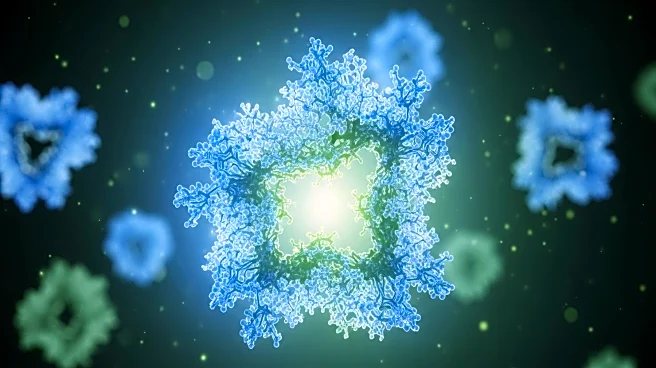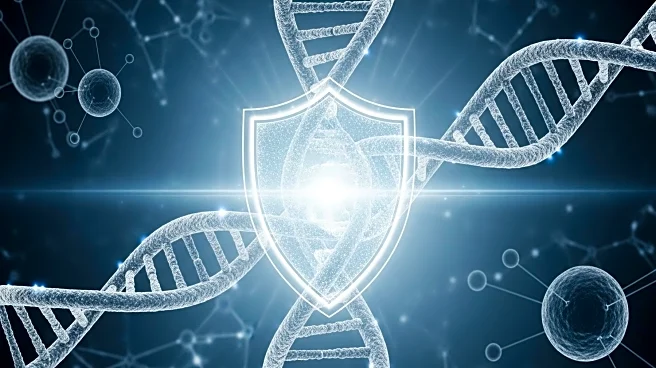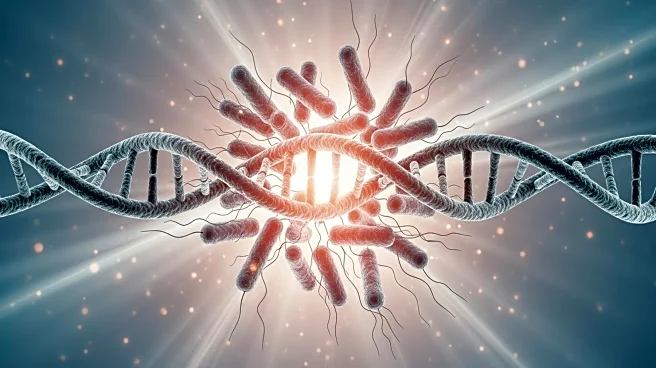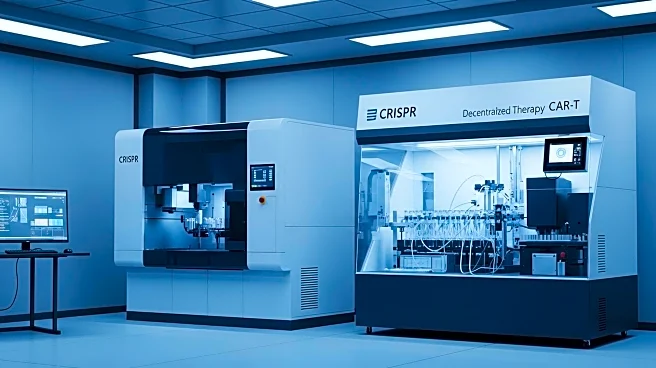Rapid Read • 8 min read
Scientists at the La Jolla Institute for Immunology (LJI) have published groundbreaking research on the structure of a protein from human endogenous retroviruses (HERVs), specifically the HERV-K Env protein. This study, featured in Science Advances, marks the first time the three-dimensional structure of a human HERV protein has been solved. The research team, led by Erica Ollmann Saphire, Ph.D., MBA, LJI President, CEO, and Professor, utilized cryo-electron microscopy to capture detailed images of the protein in various states. The HERV-K Env protein, which is found on certain tumor cells and in patients with autoimmune and neurodegenerative diseases, presents new opportunities for developing diagnostics and therapies. The study involved stabilizing the protein's structure to preserve its natural shape, allowing researchers to understand how antibodies target it.
AD
The discovery of the HERV-K Env protein structure is significant for medical research, as it opens new avenues for diagnosing and treating diseases such as cancer and autoimmune disorders. The presence of HERV-K Env proteins on cancer cells but not healthy cells suggests potential for targeted cancer immunotherapies. Additionally, understanding how antibodies interact with these proteins could lead to improved diagnostic tools for autoimmune diseases like lupus and rheumatoid arthritis. This research enhances our understanding of human biology, given that a portion of our genome is derived from ancient viruses, and could lead to innovative treatments that leverage this viral component.
Future research may focus on developing specific antibodies that can target HERV-K Env proteins on cancer cells, potentially leading to new cancer treatments. Additionally, scientists may explore the role of HERV-K Env in autoimmune diseases further, aiming to create therapies that mitigate harmful inflammation. The growing interest in HERVs suggests that more diseases may be linked to these viral proteins, prompting further investigation into their role in human health and disease.
The study highlights the complex relationship between humans and viruses, as a significant portion of our genome is composed of viral elements. This research not only advances clinical care but also deepens our understanding of human evolution and biology. The ability to visualize and manipulate these ancient viral proteins could lead to breakthroughs in how we approach disease treatment and prevention.
AD
More Stories You Might Enjoy










